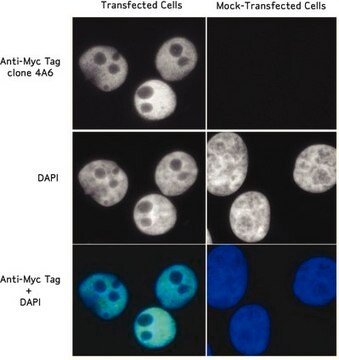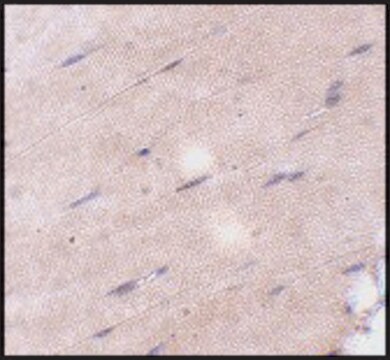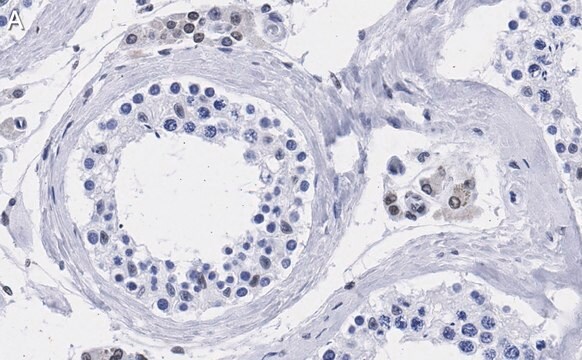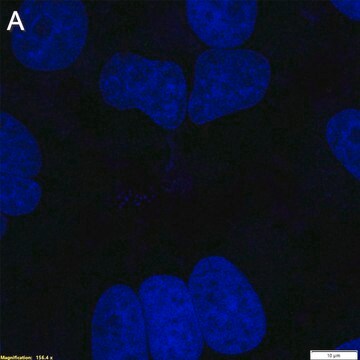SAB4200824
Anti-TFE3 antibody, Mouse monoclonal
clone TFE3-37, purified from hybridoma cell culture
Sinônimo(s):
Class E basic helix-loop-helix protein 33, Transcription factor E3, bHLHe33
About This Item
Produtos recomendados
fonte biológica
mouse
forma do anticorpo
purified from hybridoma cell culture
clone
TFE3-37, monoclonal
Formulário
buffered aqueous solution
peso molecular
60 kDa
reatividade de espécies
human, mouse, bovine, rat, canine
embalagem
antibody small pack of 25 μL
concentração
~1 mg/mL
técnica(s)
immunoblotting: 1.5-3 μg/mL using human A549 cells extract
Isotipo
IgG1
nº de adesão UniProt
Condições de expedição
dry ice
temperatura de armazenamento
−20°C
modificação pós-traducional do alvo
unmodified
Informações sobre genes
human ... TFE3(7030)
Descrição geral
TFE3 serve an important role in cell growth, cell proliferation, cellular adaptation to starvation and cellular response to ER stress. Under nutrient-rich conditions, TFE3 is located in the cytoplasm, and under starvation conditions or treatment with ER stressors, TFE3 rapidly translocates to the nuclear. In the nuclear localization, TFE3 mediates cellular adaptation to stress by simultaneously promoting lysosomal biogenesis, autophagy induction, as well as expression of critical mitochondrial and metabolic regulators. It been shown that TFE3 also participate in the transcriptional regulation of the innate immune response.
Pathogen infections promote TFE3 nuclear translocation, thus inducing In vivo expression of several cytokines and chemokines.
Aplicação
forma física
Outras notas
Exoneração de responsabilidade
Código de classe de armazenamento
10 - Combustible liquids
Classe de risco de água (WGK)
WGK 1
Ponto de fulgor (°F)
Not applicable
Ponto de fulgor (°C)
Not applicable
Escolha uma das versões mais recentes:
Certificados de análise (COA)
Não está vendo a versão correta?
Se precisar de uma versão específica, você pode procurar um certificado específico pelo número do lote ou da remessa.
Já possui este produto?
Encontre a documentação dos produtos que você adquiriu recentemente na biblioteca de documentos.
Nossa equipe de cientistas tem experiência em todas as áreas de pesquisa, incluindo Life Sciences, ciência de materiais, síntese química, cromatografia, química analítica e muitas outras.
Entre em contato com a assistência técnica







